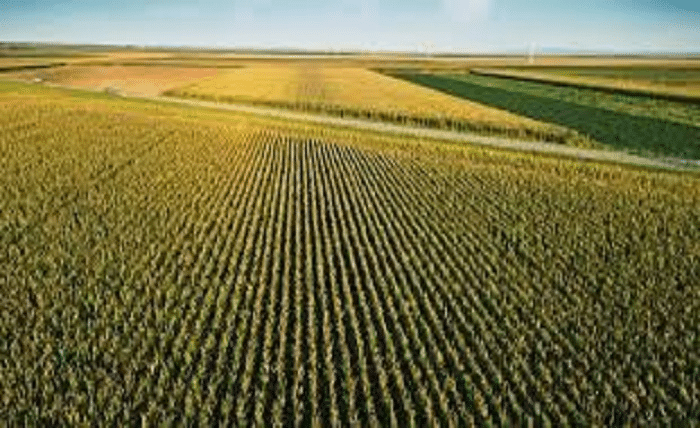Acreage and Yield Estimation Techniques for Maize Production: Enhancing Crop Health Monitoring for Optimal Yields

Maize, also known as corn, is one of the most important cereal crops globally, serving as a staple food for millions of people and a vital feedstock for livestock. Accurate estimation of maize acreage and yield is crucial for farmers, policymakers, and agricultural stakeholders. In recent years, advancements in technology and data analytics have led to the development of innovative techniques for precise estimation. This article explores the various methods and technologies used for estimating maize acreage and yield, with a focus on how these techniques contribute to crop health monitoring for optimal yields.
Importance of Acreage and Yield Estimation in Maize Production
Estimating maize acreage and yield is essential for several reasons:
– Production Planning: Farmers need accurate estimates to plan their planting schedules, optimize input usage, and forecast market supply.
– Resource Allocation: Policymakers and agricultural organizations rely on these estimates to allocate resources such as subsidies, credit, and extension services effectively.
– Market Analysis: Traders, processors, and policymakers use acreage and yield data to analyze market trends, forecast prices, and plan import-export strategies.
Accurate estimation of maize acreage and yield is crucial for enhancing productivity, ensuring food security, and promoting sustainable agricultural practices.
Traditional Methods of Acreage and Yield Estimation
1 Field Surveys and Sampling:
Historically, farmers and agricultural extension officers conducted field surveys to estimate maize acreage. This involved physically measuring field dimensions and conducting sample counts to estimate yield. While effective, this method is labor-intensive, time-consuming, and prone to human errors.
2 Yield Measurement from Harvested Areas:
Another traditional method involves measuring the harvested area of maize fields and calculating the yield based on the total output. This method provides a direct measurement but may not capture variations within the field.
Modern Techniques for Acreage and Yield Estimation
1 Remote Sensing and Satellite Imagery:
Remote sensing technologies, such as satellite imagery and aerial drones, have revolutionized maize acreage and yield estimation. These technologies provide high-resolution images of fields, allowing for the precise measurement of crop areas and health parameters.
– Normalized Difference Vegetation Index (NDVI): NDVI is a widely used index derived from satellite imagery to assess crop health and vigor. Maize fields with higher NDVI values indicate healthy and productive crops, while lower values may signal stress or poor growth.
– Multispectral Imaging: Advanced satellite sensors capture multispectral images, enabling the analysis of various crop characteristics such as chlorophyll content, leaf area index, and biomass accumulation. This data helps in predicting maize yield with high accuracy.
2 Geographic Information Systems (GIS):
GIS software integrates remote sensing data with geographical information, allowing for spatial analysis and mapping of maize fields. Farmers and researchers can create digital maps showing crop health indicators, soil characteristics, and yield potential. This enables targeted interventions and precision agriculture practices.
3 Machine Learning and Data Analytics:
Machine learning algorithms, such as random forest models and neural networks, analyze large datasets to predict maize yield. These algorithms learn from historical yield data, weather patterns, soil types, and crop management practices to generate accurate forecasts.
– Yield Forecasting Models: Machine learning models can forecast maize yields weeks or even months before harvest based on real-time data inputs. This early prediction helps farmers make informed decisions on crop management and marketing strategies.
Integration with Crop Health Monitoring
1 Early Detection of Pests and Diseases:
Remote sensing technologies can detect subtle changes in maize canopy reflectance, indicating the presence of pests or diseases. Farmers receive alerts when crop health indicators deviate from normal values, allowing for timely interventions such as pest control measures or disease-resistant seed selection.
2 Monitoring Nutrient Deficiencies:
Nutrient deficiencies can significantly impact maize yield and quality. Remote sensing tools assess the chlorophyll content and nitrogen levels in maize leaves, identifying areas of nutrient stress. Farmers can then adjust fertilizer applications based on these precise recommendations.
3 Drought and Water Stress Monitoring:
Maize is sensitive to water stress, particularly during critical growth stages. Satellite imagery and soil moisture sensors provide real-time data on moisture levels in the soil and plant water uptake. This information helps farmers schedule irrigation efficiently, preventing yield losses due to drought stress.
Benefits of Advanced Acreage and Yield Estimation for Maize Production
1 Improved Yield Predictions:
Advanced estimation techniques offer more accurate and reliable yield predictions, enabling farmers to plan harvesting, storage, and marketing strategies accordingly.
2 Optimal Resource Management:
Precision agriculture practices based on accurate acreage and yield estimates help farmers optimize the use of inputs such as seeds, fertilizers, and pesticides. This leads to cost savings and reduced environmental impact.
3 Enhanced Crop Health Monitoring:
Integrating these techniques with crop health monitoring allows for proactive management of pests, diseases, and nutrient deficiencies. Farmers can take preventive measures to maintain the health and vigor of maize crops throughout the growing season.
4 Market Access and Competitiveness:
Accurate yield estimates improve market transparency and facilitate fair pricing for maize produce. Farmers can negotiate better contracts, access credit facilities, and enhance their competitiveness in domestic and international markets.
Case Study: Precision Maize Farming with Remote Sensing
Case Study:
ABC Farms in the Midwest region of the United States implemented a precision maize farming program using remote sensing technologies.
Approach:
– The farm utilized satellite imagery to monitor maize fields throughout the growing season.
– NDVI maps were generated to assess crop health, identify areas of stress, and predict yield potential.
– Soil moisture sensors and weather data were integrated to optimize irrigation scheduling and water management.
Results:
– Early detection of nitrogen deficiencies and pest infestations allowed for targeted fertilizer applications and pest control measures.
– Precision irrigation reduced water usage by 20% while maintaining optimal soil moisture levels.
– Yield predictions based on remote sensing data were within 95% accuracy, enabling efficient harvesting and storage planning.
Conclusion:
In conclusion, the adoption of advanced crop-specific acreage and yield estimation techniques is transforming maize production worldwide. From remote sensing and GIS to machine learning and data analytics, these technologies offer unprecedented insights into crop health and productivity. By integrating these techniques with crop health monitoring practices, farmers can make informed decisions, maximize yields, and ensure the sustainability of maize farming for generations to come.




